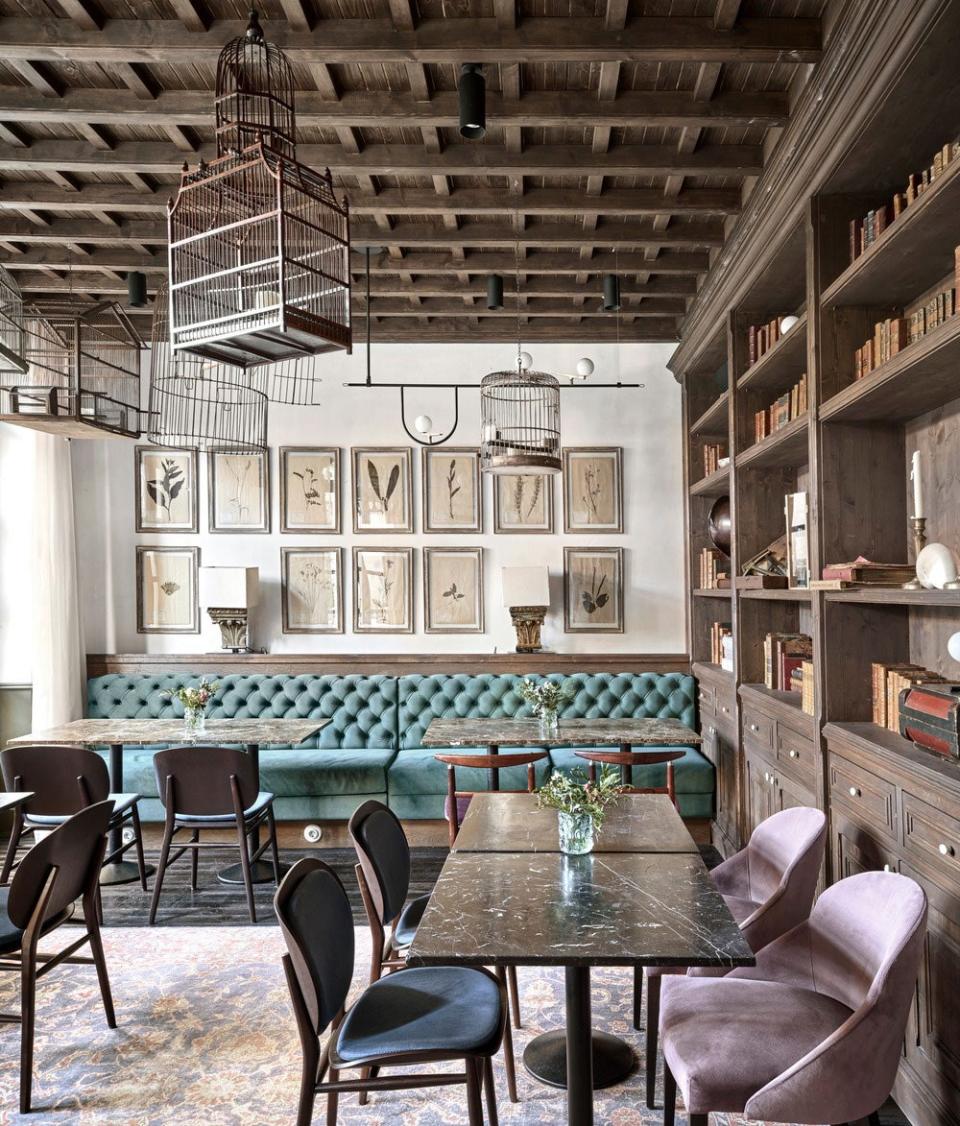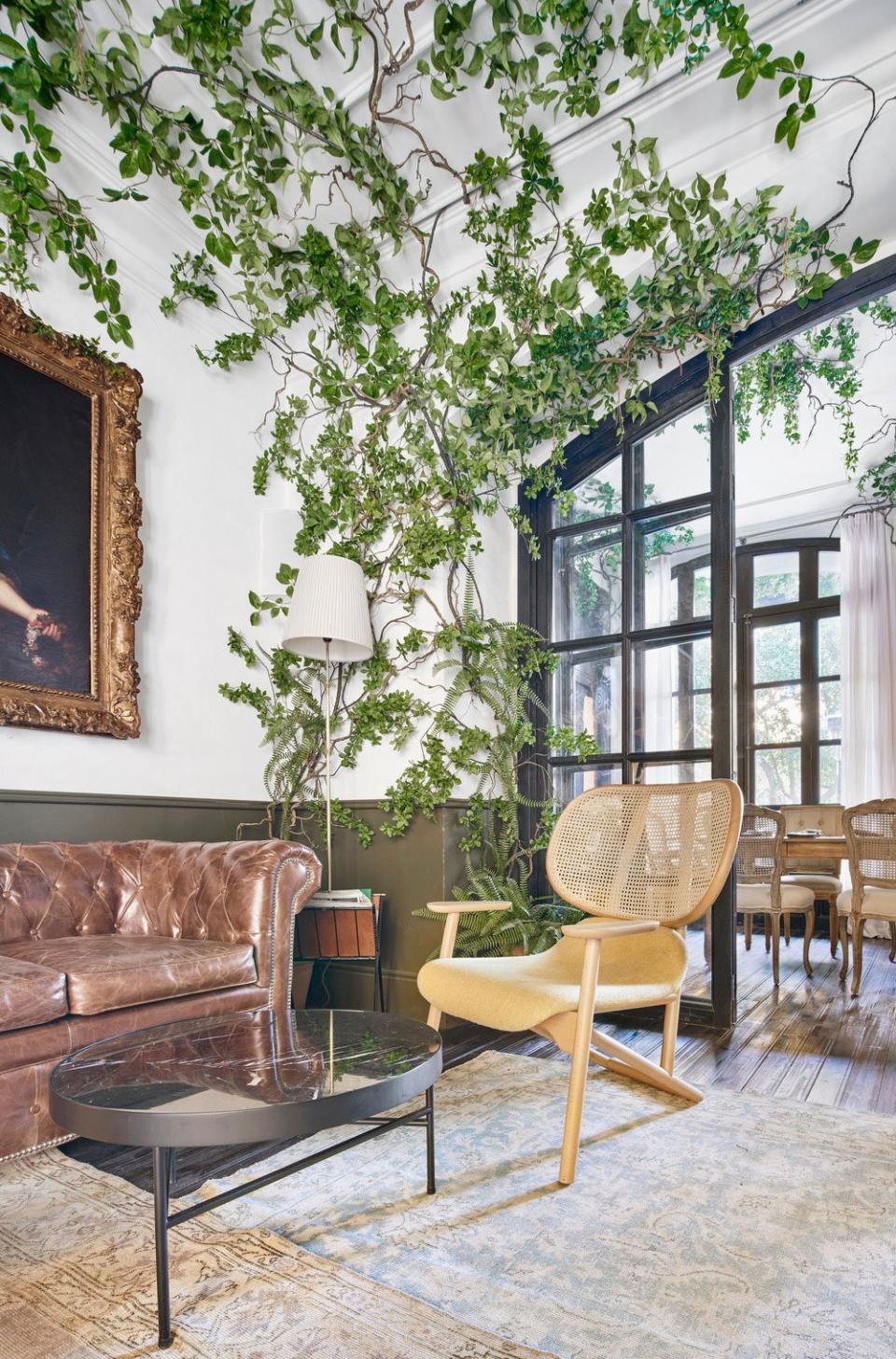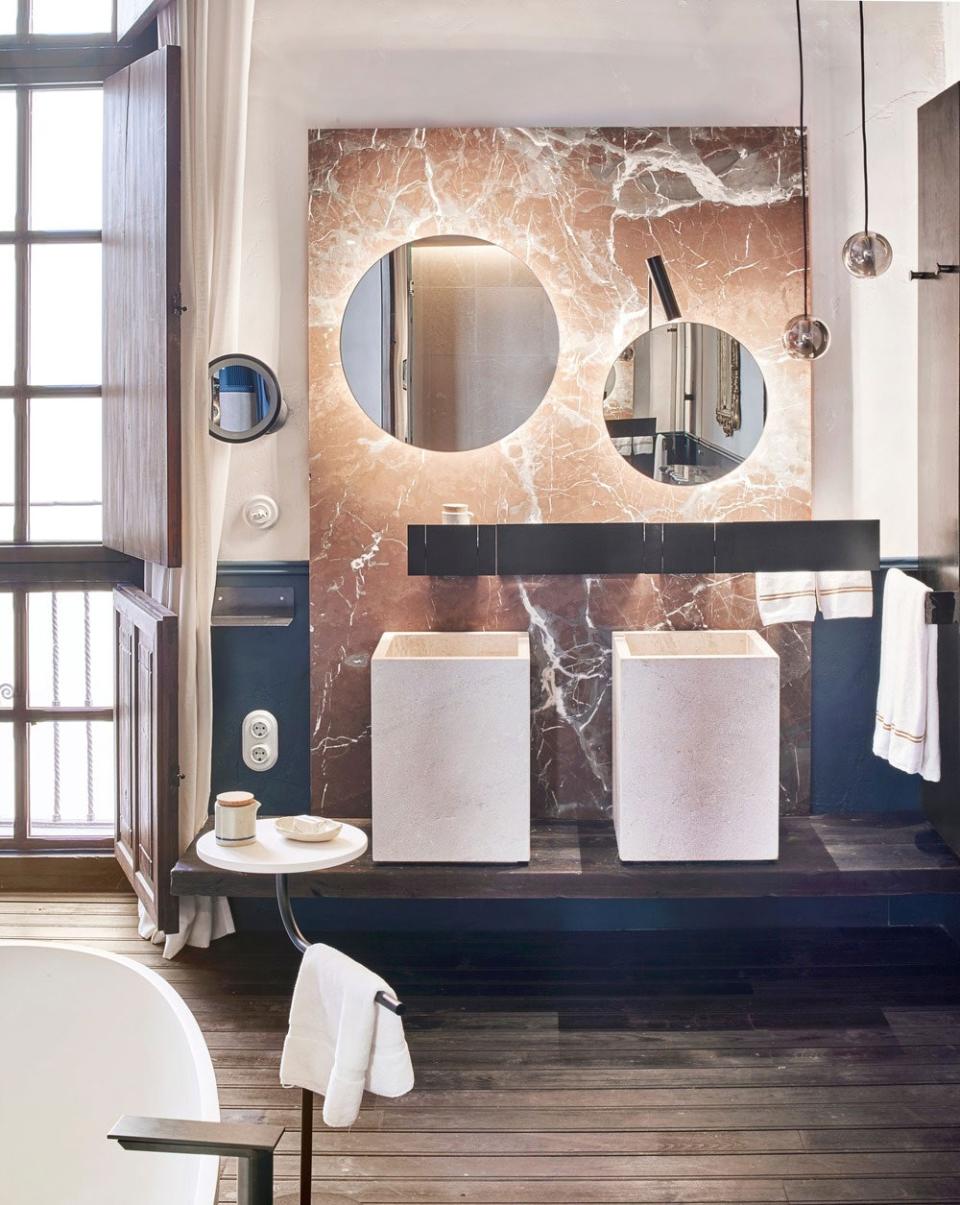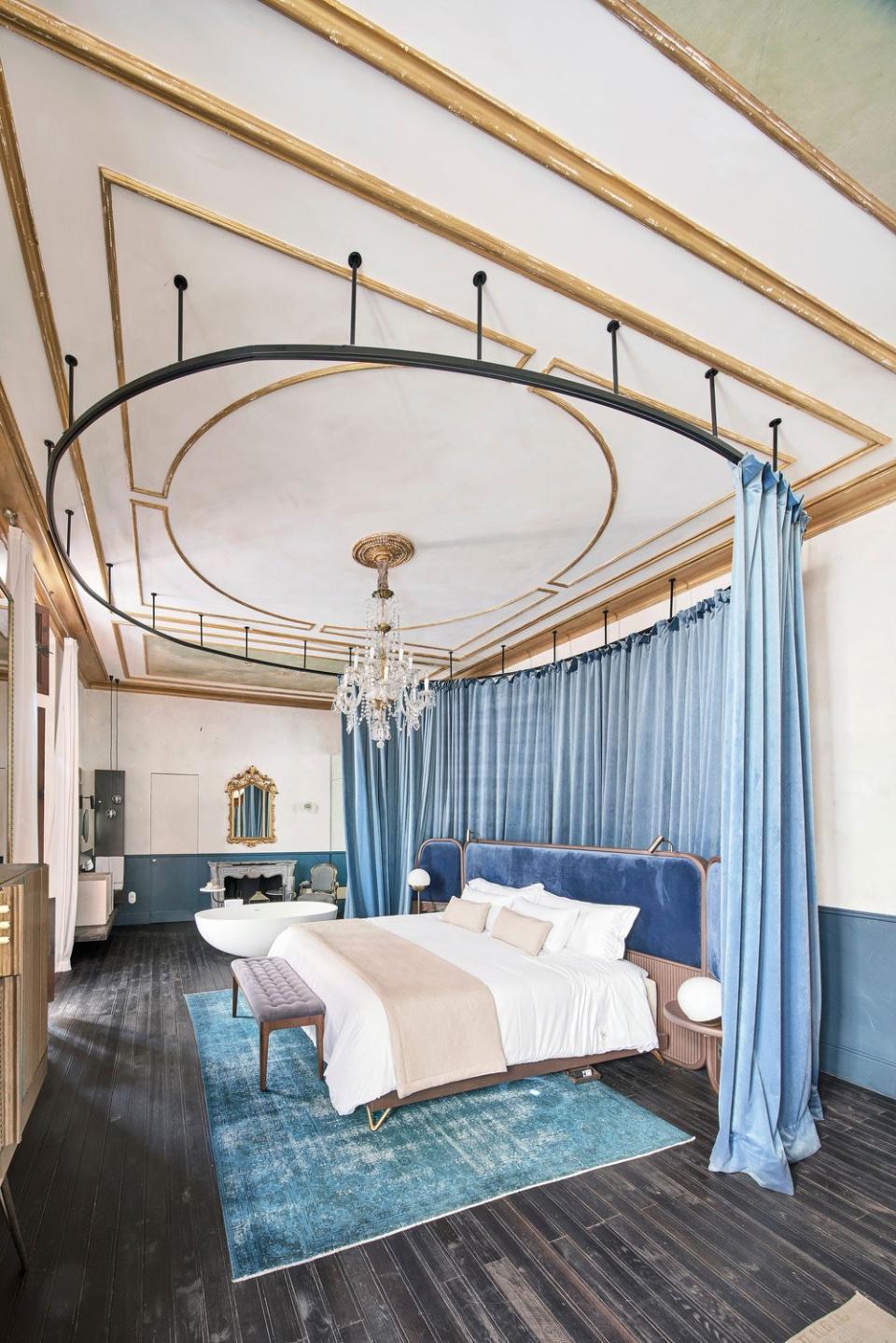4 Design Ideas to Steal From a Boutique Hotel That Expertly Balances Old and New
It’s not every day that a designer gets the chance to work with a centuries-old abandoned structure and bring it back to life. But when the architecture firm of OHLAB was given the opportunity to transform a 500-year-old building into a boutique hotel in the historic center of Palma de Mallorca—the capital of the autonomous community of the Balearic Islands in Spain—they knew that they wanted to treat the sprawling property more like “the experience of visiting a house more than a hotel,” says the firm.

With this in mind, guests of Can Bordoy Hotel enter into a space that feels more like an entry hall of a home than the lobby of a hotel: “Instead of a restaurant we find a residential dining room, the rooms and living rooms are like those you would find in an old house,” says the firm. As a result, the grand spaces that include a large garden, rooftop pool, spa, and panoramic terrace still evoke a feeling of warmth and luxurious domesticity.
And while we can’t go visit right now, we found a lot of moments of inspiration that could spark a little oasis overhaul at home.

Add modern fixtures and furnishings to bring historic spaces into the 21st century
The firm, directed by Paloma Hernaiz and Jaime Oliver, wanted to balance a respect for the historic building and its eclectic interiors, which had witnessed multiple interventions over the years. They deliberately contrasted with interventions and elements from different epochs so that they could “maintain traces of the past and avoid a false recovery of a glorious past that the house never had,” says the firm. This meant the introduction of custom-designed modern furniture and light fixtures that sit comfortably alongside historic architectural elements and older pieces of furniture—something that feels easily achievable by mixing old and new.

Look to other cultures for inspiration—both conceptual and literal
A major source of inspiration for the project was the Japanese technique of kintsugi, in which an antique porcelain vessel is repaired with a precious material, like gold dust, which renders the repaired object more valuable than its original state—even though the repair is made highly visible. OHLAB took this idea to heart, creating spaces that celebrate the different layers and clearly highlight the new interventions instead of hiding the complexity of the original building.


Strategically place greenery for a theatrical but inviting effect
The architects noted that “one of the most distinctive elements of the property is its garden,” and they not only retained much of its richness and original plantings, but also brought greenery into other spaces. A corridor leading from the courtyard to the dining room continues the vegetation found outside, “invading the dining rooms,” says the firm, and large plantings in the outdoor areas hint at the site’s long history. They used both large potted plants and larger, trellised plantings to bring the outdoors in.


Be daring when it comes to selections for small spaces
In each room, heavy floor-to-ceiling velvet curtains conceal the bathrooms, “creating a scenography” that disguises them, explains the OHLAB team. The drama of pulling back the curtain reveals a new “set” with bold material and color selections: a dusty-pink marble backsplash, a stone basin and vanity that seem to float in thin air, and a rich, deep turquoise wainscot that runs along the wall behind. Afraid to do something similar in your own bathroom? Start with small touches of a similar palette; a hint of marble, plush velvet, and a deep jewel tone can go a long way.
Originally Appeared on Architectural Digest


